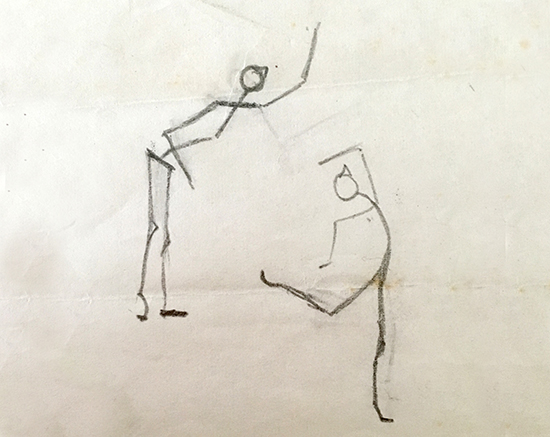Sybil always considered herself a soloist, and early on she was recognized as unique and original. Ultimately she was set apart from others by her exquisitely-trained body, her connection to nature rather than the city, her unpredictability as to theme and movement, her humor, and her rare performances, always new. John Martin noted,“Technically she is miraculous; her body does things that are incredible, not only in conception but in execution” (1942) and Walter Terry wrote, “Most innovators become with time more rigid than their conservative rivals . . . Not so with Sybil Shearer. Every year, for those who travel to see her dance, there is a new avenue to be explored.”(1975)
In 1942 Sybil left New York and came to Chicago to teach. There she met Helen Balfour Morrison, who soon became her most important mentor and patron. In 1951 Helen and her husband Robert helped Sybil move to her own studio-residence near them in Northbrook, creating an environment where she was free to create and grow as an artist and where her need for privacy and seclusion was gently mixed with the company of friends, dogs, and visitors. This was a far cry from the “broken rhythm” she had felt in New York, and for a dancer it was an unconventional life. Yet here in solitude she was able to create astonishing works of art.

